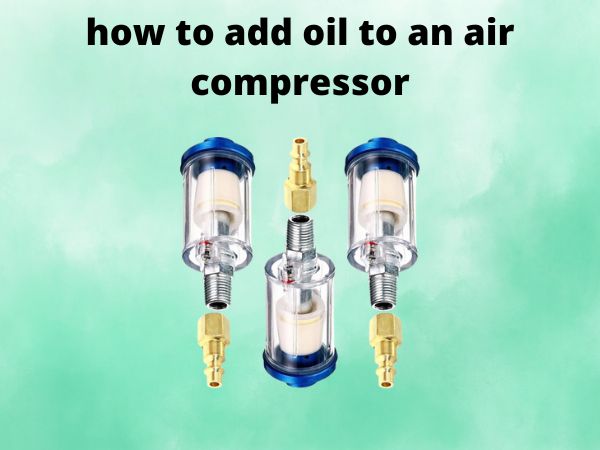How to Add Oil to an Air Compressor the Right Way
If you’re the proud owner of an air compressor, congratulations! These powerful tools are essential for a wide range of DIY and professional projects, from inflating tires to operating pneumatic tools. However, like any mechanical device, your air compressor requires regular maintenance to keep it running smoothly. One of the most crucial tasks is ensuring that the compressor is properly lubricated with the right type and amount of oil.
In this comprehensive guide, I’ll walk you through the step-by-step process of adding oil to your air compressor, so you can keep it in tip-top shape and avoid any costly breakdowns or malfunctions. Whether you’re a seasoned DIYer or a newbie to the world of air compressors, you’ll find the information you need to maintain your machine and get the most out of it. So, let’s dive in and learn how to add oil to an air compressor the right way!
Table of Contents
Understanding the Importance of Lubricating Your Air Compressor
Air compressors are complex machines that rely on a delicate balance of moving parts to function properly. These parts, such as the pistons, bearings, and valves, generate a significant amount of heat and friction during operation. Without proper lubrication, this heat and friction can quickly lead to excessive wear and tear, ultimately resulting in costly repairs or even a complete breakdown of the compressor.
By regularly adding the right type and amount of oil to your air compressor, you can help to mitigate these issues and extend the lifespan of your machine. The oil acts as a lubricant, reducing friction and heat buildup, while also helping to protect the internal components from corrosion and damage. Additionally, regular oil changes can help to remove any contaminants or debris that may have accumulated in the system, further improving the overall performance and efficiency of your air compressor.
Preparing to Add Oil to Your Air Compressor
Before you begin the oil-adding process, there are a few important steps you’ll want to take to ensure that you do it correctly and safely. First and foremost, be sure to consult your air compressor’s owner’s manual for specific instructions on the type and amount of oil recommended by the manufacturer. Using the wrong oil or overfilling the compressor can lead to serious problems, so it’s crucial to follow the manufacturer’s guidelines.
Next, make sure that your air compressor is turned off and unplugged from the power source. This will help to prevent any accidental start-ups or sudden movements that could cause injury or damage. Additionally, you’ll want to ensure that the compressor has had ample time to cool down, as the oil reservoir and other components can become extremely hot during operation.
Finally, gather all the necessary tools and supplies, including the appropriate type and quantity of oil, a clean rag or paper towels, and a funnel (if needed) to help you easily pour the oil into the compressor’s reservoir.
Step-by-Step Instructions for Adding Oil to Your Air Compressor
Now that you’re prepared, let’s dive into the step-by-step process of adding oil to your air compressor:
Locate the Oil Reservoir
The first step is to locate the oil reservoir on your air compressor. This is typically a small, easily accessible port or cap on the side or top of the machine. Consult your owner’s manual if you’re unsure of the exact location.
Check the Oil Level
Once you’ve found the oil reservoir, use the dipstick or other level indicator to check the current oil level. This will help you determine how much oil you need to add to reach the recommended level.
Add the Appropriate Oil
Using the funnel, if necessary, carefully pour the recommended type and amount of oil into the reservoir. Avoid overfilling, as this can also lead to problems. Consult your owner’s manual for the specific oil type and quantity required for your air compressor model.
Replace the Oil Cap or Plug
After adding the oil, replace the oil cap or plug securely to prevent any leaks or contamination.
Wipe Up Any Spills
Use a clean rag or paper towels to wipe up any oil that may have spilled during the process. This will help to keep your work area clean and prevent any potential slip hazards.
Maintaining Your Air Compressor’s Oil Level
Adding oil to your air compressor is an essential task, but it’s not a one-and-done deal. To keep your compressor running at its best, you’ll need to regularly check and maintain the oil level. Refer to your owner’s manual for the recommended oil change interval, which can vary depending on the make and model of your compressor, as well as the frequency and intensity of its use.
As a general rule, it’s a good idea to check the oil level before each use and top it up if necessary. This will help to ensure that your compressor is always properly lubricated and operating at peak efficiency. Additionally, be sure to replace the oil at the recommended intervals, using the same type and quantity of oil as specified by the manufacturer.
Conclusion
Maintaining your air compressor’s oil level is a simple but essential task that can help to extend the life of your machine and ensure optimal performance. By following the steps outlined in this guide, you can easily add oil to your air compressor and keep it running smoothly for years to come. Remember to always consult your owner’s manual, use the recommended oil type and quantity, and be cautious when working with any mechanical equipment. With a little bit of care and attention, your air compressor will continue to be a reliable and valuable tool in your DIY or professional arsenal.
FAQs
What type of oil should I use in my air compressor?
The type of oil you should use in your air compressor will depend on the manufacturer’s recommendations, which can be found in your owner’s manual. Common options include non-detergent compressor oil, synthetic compressor oil, or even specialized air tool oil. Always use the oil type specified by the manufacturer to ensure the best performance and longevity of your compressor.
How often should I change the oil in my air compressor?
The recommended oil change interval for your air compressor will also be specified in the owner’s manual. Generally, you can expect to change the oil every 6 months to 1 year, or every 500-1000 hours of use, depending on the intensity of your compressor’s workload. Be sure to follow the manufacturer’s guidelines to keep your compressor in top shape.
What happens if I overfill my air compressor with oil?
Overfilling your air compressor with oil can lead to several problems, including increased oil consumption, leaks, and even damage to the internal components. The excess oil can cause the compressor to work harder, leading to overheating and premature wear and tear. If you accidentally overfill the oil reservoir, be sure to drain the excess oil before running the compressor to avoid any potential issues.
Can I use any type of oil in my air compressor?
No, you should not use just any type of oil in your air compressor. The manufacturer has specifically recommended the type of oil that is best suited for your particular model, taking into account factors like the compressor’s design, operating temperatures, and expected usage. Using the wrong oil can cause damage to the internal components and lead to decreased performance or even a complete breakdown of the machine.
How do I know if my air compressor needs more oil?
The easiest way to determine if your air compressor needs more oil is to check the oil level using the dipstick or level indicator. If the oil level is below the recommended range, it’s time to add more. Additionally, if you notice any unusual noises, decreased performance, or other signs of trouble, it’s a good idea to check the oil level and top it up if necessary.





